Spotlight on Julia Cumes
Jan 28, 2015
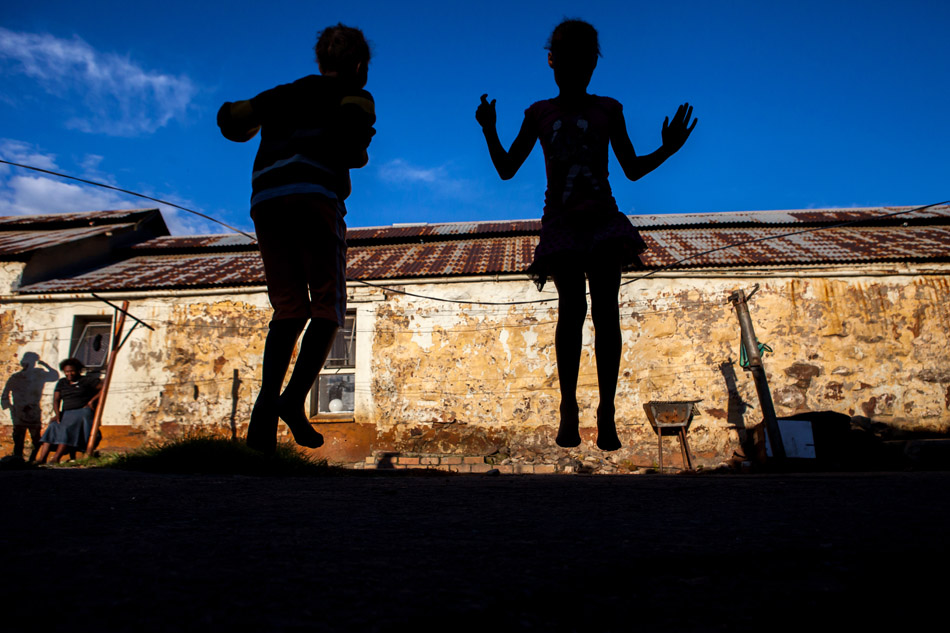
TID:
Thanks for your time, Julia. I love this image. Can you tell us a little of the back story of your work and what brought you there?
JULIA:
Thank you, Ross. I admire so many of the projects and photographers you've featured on The Image Deconstructed, and I feel honored to be included in such great company.
During a visit to South Africa early last year, I spent a lot of time on the outskirts of Johannesburg in a neighborhood centered on an old goldmine called “Durban Deep”. I was there to document the work of Cora Bailey who founded Community Led Animal Welfare (CLAW), an organization that provides veterinary services to some of the area’s most impoverished shantytowns. My time there just happened to coincide with some dramatic events that radically transformed the neighborhood (Durban Deep) in which CLAW is located. I felt compelled to document what was happening.
Just to give you a bit of background, like many of South Africa’s now defunct gold mines, Durban Deep is a relic from South Africa’s apartheid past. While it shut down its mining operations about 15 years ago, the property it sits on has continued as a neighborhood to many low income residents who moved in after miners and management left. Despite crumbling walls, a rat infestation and very poor sanitary facilities, the two hostels that used to house miners are very much inhabited--lots of kids, families etc. Until recently, a host of businesses and organizations such as a fire fighter training school, a golf course, a judo school, CLAW and a primary school still operated in the neighborhood. When Durban Deep was recently sold to developers, no one could have anticipated the sudden and dramatic transformation the mine and its surrounding neighborhood would take. While the developers had not yet begun to evict residents or start work, the area was, in a short period of time, transformed into a sort of post-apocalyptic wasteland.
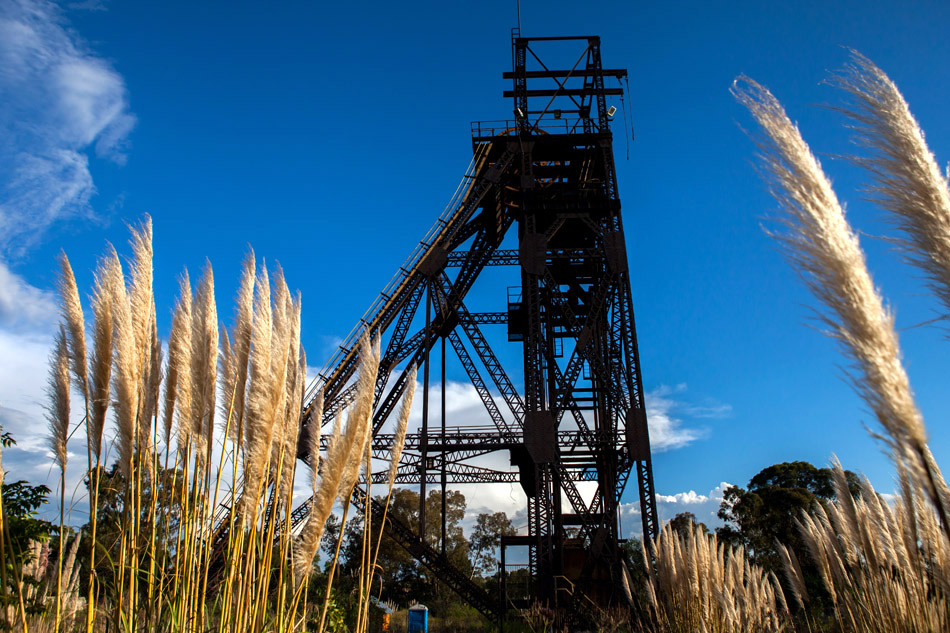
Soon after the sale of the property was announced, copper thieves moved into the neighborhood, cutting down and pulling up cable, which meant local residents and businesses no longer had power. The copper thieves began burning the cable to extract copper in Durban Deep fields which left a toxic layer of smoke hanging over the area. In addition, illegal gold mining which has long been a problem in the area, escalated, leaving the land riddled with deep holes, craggy ditches and reopened mine shafts which pose a danger to neighborhood children (and to the miners themselves). So this was what I encountered when I arrived. The image you chose is from a series of photos from the abandoned goldmine hostel. The whole area had lost power for a while because the copper cables had been stolen but people continued to live there. I wanted to capture something of the atmosphere of the place and I thought these kids skipping, using stolen cable casing as skipping ropes, said a lot about how people were still trying to live normal lives despite the harsh reality of what was happening to their neighborhood.
TID:
Can you tell us more of you connection to South Africa and what it means for you to return there?
JULIA:
I was born in South Africa and grew up there during the apartheid era. During the late eighties my parents thought nothing would change politically and decided they wanted to leave the country and give my sister and me the opportunity to live in a more integrated society. At the time Nelson Mandela was still in prison, the nationalist government was getting more and more fascistic and the country was pretty much living under martial law. So my sister and I (we were about 15 and 16 years-old at the time), moved to the U.S. ahead of my parents and lived with an American family for a year until father was able to get a job and join us and then our mother followed later. Ironically only a few years after we left, Nelson Mandela was released and everything changed.
I always felt a sense of sadness that we weren't there to witnesses the incredible changes that took place. No matter how long I've been away from South Africa, I still feel a powerful draw to it. I've been back numerous times over the years for various projects and always feel a strong sense of being home. On the other hand, it's a very complicated place and I'm often struck by how, despite the 20 years since apartheid ended, so little has changed for many South Africans. I always feel both inspired and heartbroken by this beautiful country, and I think what I encountered during my brief stay last year only affirmed my sense that apartheid and its legacy still haunt the country.
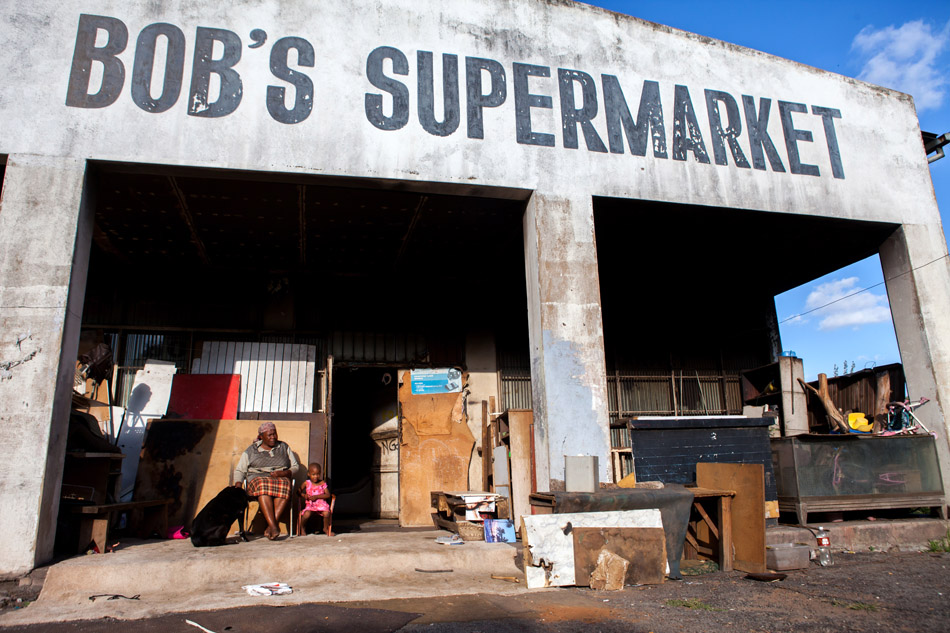
TID:
What challenges did you encounter while working there, especially mentally?
JULIA:
One of the biggest challenges was personal safety. The area I was photographing in almost felt like a war zone. People were stealing everything they could get their hands on--not just the valuable copper from cables but they were dismantling pretty much the entire neighborhood. Gangs would break into houses every night and sometimes even during the day, threaten the residents and proceed to take anything of value including infrastructure--windows, doors, bricks etc. Security guards employed to protect the few remaining private businesses ran away when the gangs came in. South Africa generally has an incredibly high crime and homicide rate and this neighborhood was an extreme version of the rest of the country. So as you can imagine, walking around with camera gear and potentially photographing people breaking the law isn't the safest thing in the world.
Luckily I was working with CLAW's founder and director, Cora Bailey, who has been working in this community for over 30 years and is beloved by them. Her car is very recognizable since it has the CLAW logo on it and so there was a sense that we had some protection because of her reputation. Nonetheless, we had to be very careful and gauge each situation. It was also just painful watching this neighborhood fall apart. There was a sense that people were living so on the edge already and had very little to begin with and their world was being dismantled in front of their eyes at a very rapid pace. As things escalated, local residents became more and more angry and frustrated with the situation. With no response from police despite many calls, the residents formed vigilante groups to tackle the situation themselves. On one of my last days there, Cora and I ran into a truck that had been turned on its side.
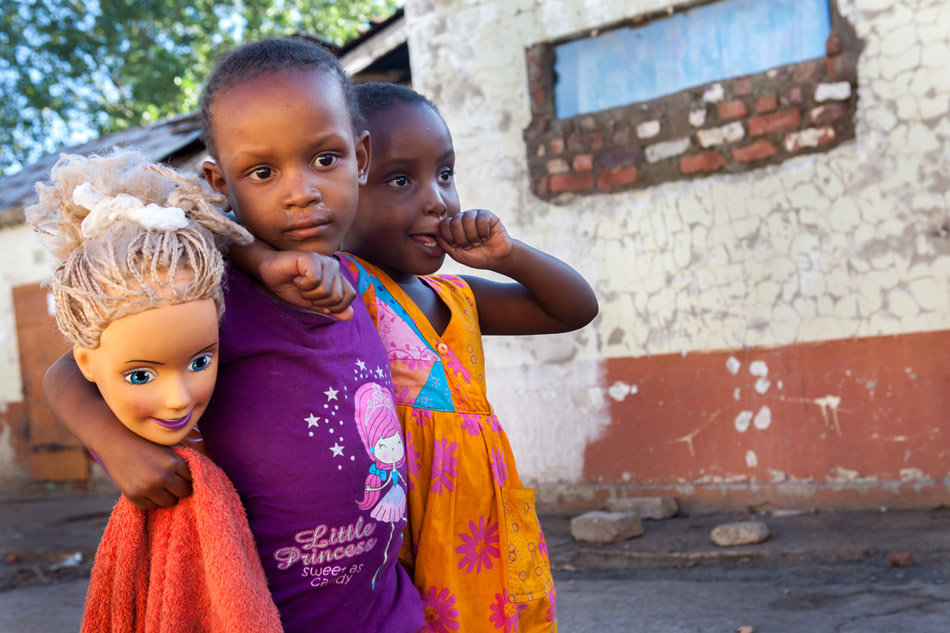
We asked what had happened and the residents told us the truck belonged to the thieves and they had turned it over to teach them a lesson. Apparently the thieves had abandoned the truck and run off. While our sympathies were with the residents who felt disempowered and angry that their neighborhood was being destroyed, Cora expressed concern with the feeling of escalating violence and at one point said to me, “I think something bad is going to happen this weekend.” Cora has seen her fair share of violence in South Africa and has often been caught up in frightening situations. Sure enough, a few days later, a group of neighborhood vigilantes attacked some of the thieves, killing six of them. While the police were called, the killings were not reported nor was anyone arrested. The painful part was that this small community is just one of so many in South Africa living with this degree of insecurity and violence.
Lastly, since this wasn't a pre-planned photo project, I wasn't really sure at any point what the story was going to be exactly.
I knew that something important was happening in this community and I felt an urgency to capture it and write about it but it certainly wasn't a typical assignment and it was impossible to predict what the next day would hold or what the narrative would ultimately be. I knew I wanted to capture how the residents of Durban Deep were trying to continue on with some semblance of normalcy and also show how their physical world was being dismantled so I focused on capturing images that would show those two opposing elements. If I lived in South Africa still, I would definitely have made this a long term project but as I was there pretty briefly, the story was limited by what I was able to capture in the short time I was there.
TID:
How did you handle and overcome these problems?
JULIA:
Well, the security issue I handled as best as possible by being careful, listening when Cora told me to it wasn't safe to photograph, and just generally being as aware and respectful of the situation as possible. Cora has such an intimate understand of this community and I was so grateful for her support during this project as I really could not have been there without her. As for the unplanned, somewhat chaotic nature of this story, I eventually let go of any idea of what the story should be and just tried to capture what I was seeing and bare witness to this brief and dramatic pocket of history in this neighborhood. I don't think I came out with anything very complete but I think I let go of that.
My access to this community was completely a product of working with Cora. I was in South Africa the previous year photographing CLAW's work for the International Fund for Animal Welfare (IFAW). I had so much admiration for the work Cora and CLAW were involved in which went far far beyond providing veterinary services for some of the most impoverishes shantytowns on the outskirts of Johannesburg. I stayed in touch with Cora and since I was going to be in Rwanda teaching photography for a few weeks, asked her if I could come spend some unstructured time with her in South Africa afterwards documenting her work without an official IFAW assignment. When I arrived, she quickly caught me up on what had been happening at Durban Deep where CLAW is located. There was such an urgency to the situation, I started photographing almost immediately. I pretty much went with Cora wherever she went and since she's deeply deeply involved in the community and knows most of the residents well, I had pretty immediate access. I was very aware of how lucky I was to gain such great access through her and worked hard to show respect for this access.
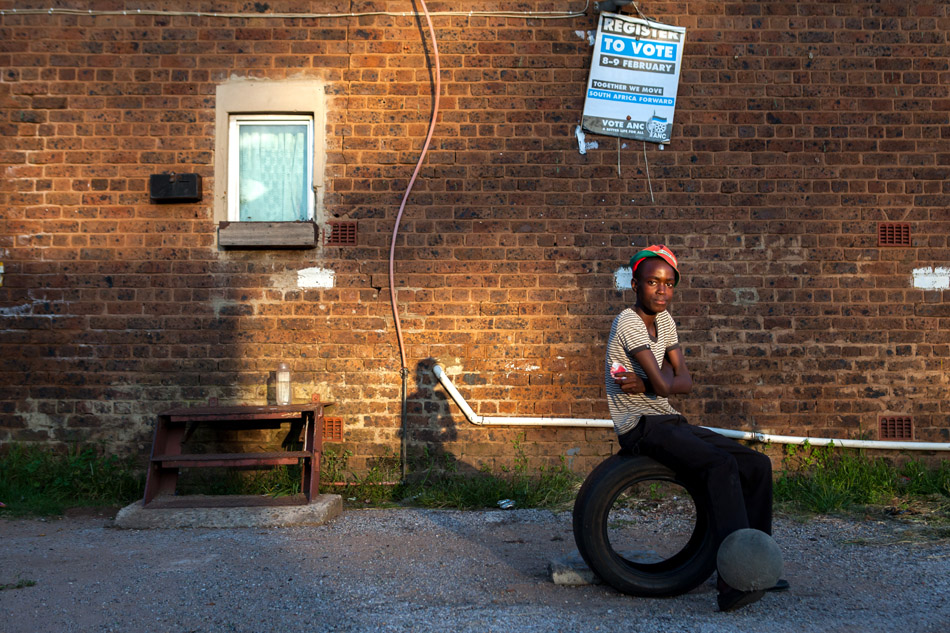
TID:
What has surprised you about this type of work?
JULIA:
I was surprised by some of the small ironies and absurdities I ran into. For instance, at one point we ran into a makeshift "restaurant" some enterprising people had set up in a field. There were a couple of guys carving a big chunk of meat in the middle of a field with a few tree stumps here and there for their "restaurant guests" to sit on! Apparently they were trying to capitalize on the influx of illegal gold miners, or thieves who would be hungry after a night of breaking apart houses or digging up copper! I was stunned by "Bob's Supermarket," which is an old mine-era supermarket now inhabited by multiple families. Each family has created a little partition to have some sense of privacy. Of course, the kids skipping using the casing of stolen copper was another one of these moments that was just so absurd and beautiful and heartbreaking. I was amazed by the normalcy--kids playing soccer, moms hanging laundry, a man hitting golf balls...all while a gang of guys dismantled a house right next door. I think I was generally struck by how adaptable humans can be, how creative in their effort to survive and make something of their lives despite very challenging circumstances.
TID:
Now, onto the moment. Can you lead us up to the moment as well as the moment itself (also how you decided to position yourself).
JULIA:
Well as I said earlier, I really wanted to capture a sense of what life was like for the residents of Durban Deep and the hostel felt in some ways like the heart of the community. I spent quite a bit of time there just photographing whatever was going on, and when I saw these girls and recognized what they were skipping with, I knew this was a situation I wanted to stick with. It was a stunning, bright blue sky kind of day and the kids were skipping in shadow. Rather than photographing them in shadow, I positioned myself against the wall that was creating the shadow, so that the kids were silhouetted against the bright sky and lit-up textured wall of the hostel. I shot for a while, waiting for the girls' body language to be expressive, for there to be the separation, for the moment to come together and feel right. Not everything came together. There were some elements in the other shots I wish I had in my final shot but I thought the one I chose felt most like what the moment was about.
TID:
What have you learned about yourself in the process of making these images?
JULIA:
I think this story taught me to look harder, to not be afraid of seeing beauty amidst ugliness, to recognize that life and people are complex and to let go of trying to make a neatly-wrapped package out of it all. There were so many moments during my time at Durban Deep in which I saw people's extreme vulnerability as well how threatening they could be to others. I love photography for its ability to take me to these uncomfortable places, and as much as I'd like to have a neatly wrapped up story, I had to embrace the complexity and messiness of this project. I don't know what will become of this community and I suppose I may never know but at the very least, I hope my images stand witness to what happened there during that dramatic time period.
TID:
What have you learned about others?
JULIA:
I learned how resilient human beings can be. I was amazed by what people had to live with on a daily basis and how creatively they adapted to their circumstances. I've witnessed this in many other projects I've worked on, where people were in vulnerable situations, but it struck me here again in a way that was powerful. I also learned about how generous people can be even in the most ungenerous of circumstances. Cora, for instance, blew me away on an almost hourly basis. She was so unafraid to be involved in people's very difficult lives. She was constantly trying to connect people with resources or get them out of some awful situation. Her life was chaotic and stressful and yet she seemed to have unflagging energy for this community which she has been working with for over 30 years. She was distraught by what was happening not just to CLAW (incidentally, almost every night while I was there, stuff was stolen from the CLAW building including basic infrastructure like the generator, the transformer, cables, fuse boxes, a steel door etc. and the clinic had to be temporarily moved to another area) but what was happening to the whole community and yet she stayed engaged and empathetic and didn't fall apart. It's one thing being generous when all is well in your world, but something completely different when your world is falling apart.
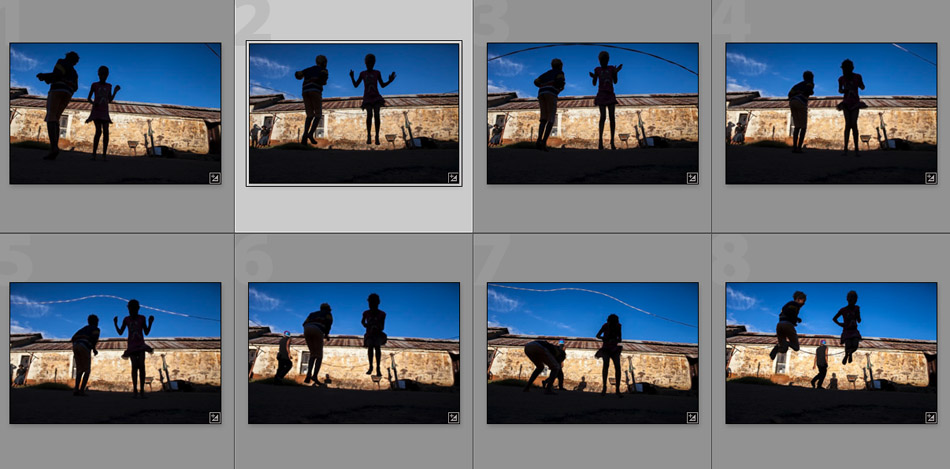
TID:
In conclusion, what advice do you have for photographers?
JULIA:
This may sound really cliche, but I'd encourage other photographers to follow their hearts and seek out personal projects that feel meaningful to them. I know we all have to pay the bills and it's important to do the work that does that but I think making time for personal projects is so critical. The work that keeps me excited about photography, and growing as a visual story-teller, has almost always been projects I've pursued of my own volition. If you're passionate and curious about a subject, you're going to push it in a way you wouldn't a regular assignment, or work you're otherwise not that excited about. I think it's what centers us as photographers and brings us back to why we wanted to be photographers in the first place.

:::BIO::::
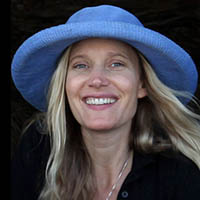
Julia Cumes is a photographer based on Cape Cod, MA. She specializes in photojournalism, environmental portraiture, travel and editorial photography.
Julia was born in South Africa and moved to the United States as a 15-year-old. She first fell in love with photography as a teenager in South Africa when she began shooting black and white film and printing her own work.Since then she has completed a B.A. at Brandeis University, an M.F.A. in writing at Cornell University, a Masters in Photojournalism at Syracuse University’s Newhouse School and has been working as a photographer ever since. Julia currently photographs for a variety of newspapers, magazines and organizations. Her work has appeared in publications such as the New York Times, Boston Globe, The Chicago Tribune, USA Today, National Geographic's "Your Shot" assignments, the London Times and Washington Post. She has also worked on numerous long term projects and multi media pieces around the globe. She recently recieved the "Art within Reach" grant and a solo show for her project,"Invisible Selves: Exploring Female Identity and Experience." Her blog, Apertures and Anecdotes features a wide range of photographs and the stories behind them. Most recently, she spent time teaching photography to children in Rwanda at the "Through the Eyes of Hope Program" and also teaches photography workshops locally on Cape Cod. "I strive to create photographs one can't turn away from--photos that are powerful and capture in a unique way this extraordinary world we live in," she says.
You can see more of Julia's work on here: